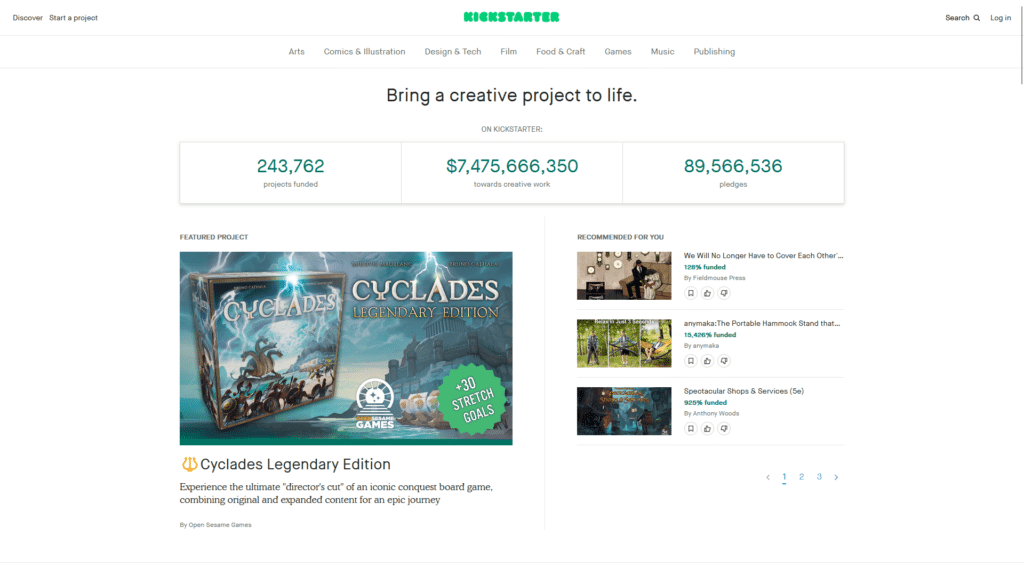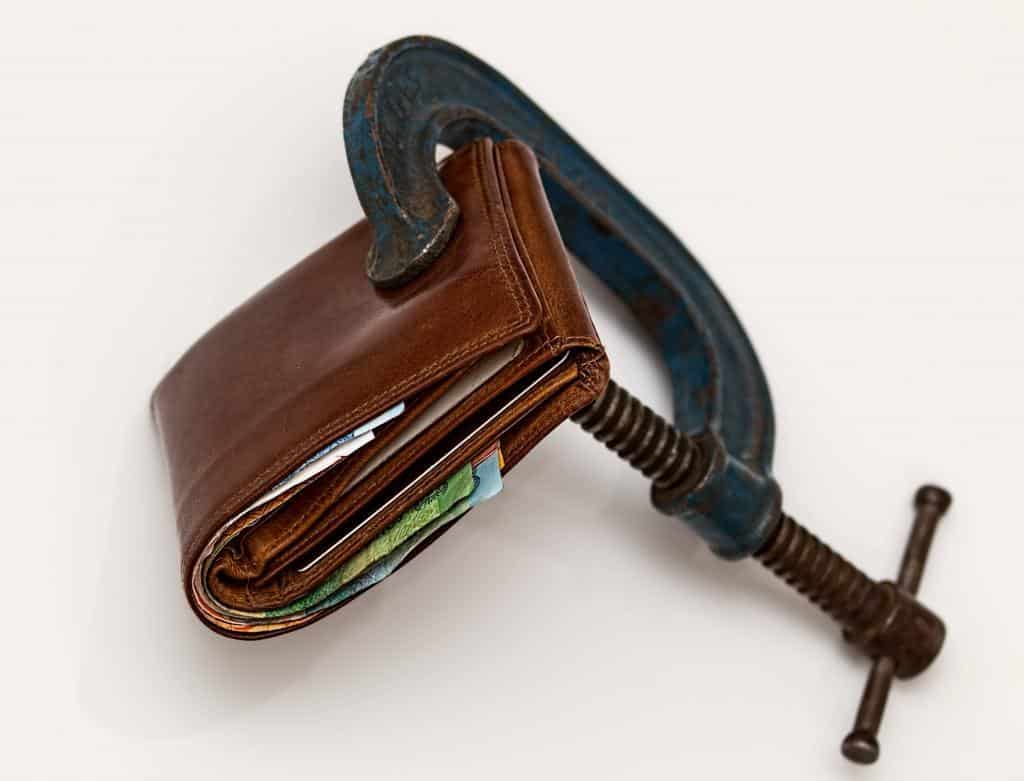Imagine you’re an entrepreneur with a groundbreaking business idea, but you don’t have the money to get it off the ground. You certainly wouldn’t be alone – this is a common challenge faced by many startups. But what if you could raise the funds you need, not from venture capitalists or traditional lenders, but directly from individuals who are just as excited about your idea as you are?
That’s the idea behind Kickstarter, and crowdfunding in general, and that’s why it’s so powerful and popular today.
In this article, we explore why Kickstarter can be a powerful tool in starting a business, shedding light on its operations, trustworthiness, and the strategies necessary for a successful campaign.
What is Kickstarter?
Kickstarter is a crowdfunding platform that allows creators to fund their creative projects through the financial support of the crowd, i.e., people from around the world who are interested in the project. Kickstarter was founded in 2009 and has since facilitated the funding of thousands of projects, ranging from films and music to technology and design.
A key feature of Kickstarter is its all-or-nothing funding policy. Creators set a funding goal and a deadline, and they must meet or surpass this goal within the time frame to receive the funds. If the goal is not met, no money changes hands.
Can Kickstarter Be Used To Start A Business?
Absolutely. Kickstarter has become a popular choice for entrepreneurs to raise capital for their startup businesses. The platform allows individuals to present their business ideas to a wide audience and secure funding through pre-sales or donations.
For instance, the Pebble E-Paper Watch is the first truly high-profile example of a business that started on Kickstarter. Its campaign in 2012 became the most funded in Kickstarter’s history at the time, raising over $10 million from nearly 70,000 backers. Kickstarter has only grown as a platform since.
Kickstarter has guidelines for starting a project which state that creators are responsible for completing their project and fulfilling each reward. Additionally, projects must fit into one of Kickstarter’s 13 categories, and they cannot fundraise for charity, offer financial incentives, or involve prohibited items.
The advantages of using Kickstarter to start a business include access to a large audience of potential customers, the ability to test the market and validate ideas, and the opportunity to raise funds without giving up equity. However, the platform also has drawbacks, such as its all-or-nothing policy, the fees it charges, and the significant amount of time and effort required to run a successful campaign.
Can Kickstarter Be Trusted?
Kickstarter has a strong reputation as one of the foremost crowdfunding platforms worldwide. To date, Kickstarter has been home to nearly 250,000 campaigns and has helped creators to raise almost $7.5 billion dollars since its inception in 2009.
Transparency is built into Kickstarter campaigns from the start. Every project’s funding progress is publicly visible, and creators are required to share regular updates on project development and fulfillment of rewards.
As for protections and remedies for backers, Kickstarter ensures that creators are legally obligated to fulfill their promises. If a creator cannot fulfill a project, they must provide a refund or offer an explanation, detailing how funds were used, and the work done towards the project completion.
This does not mean that every single campaign ships and that every backer is pleased. However, given Kickstarter’s status as a platform for businesses to launch products in their early stages, it has been remarkably successful and reliable.
Kickstarter also has a dispute resolution process. It encourages backers and creators to communicate and work out issues amongst themselves. For egregious situations or policy violations, Kickstarter can intervene and take action such as suspending the project or banning the creator.
Why Use Kickstarter?
Kickstarter is more than just a fundraising tool. It offers various advantages that can be integral to launching a new business. Its vast, global community is a potential customer base that can provide critical early feedback and validation. Many projects also gain publicity due to their Kickstarter campaigns, which can help raise awareness and establish brand recognition.
Moreover, Kickstarter allows creators to test the market before fully committing to production. It provides an opportunity to see if there is demand for the product, thereby reducing business risks.
However, using Kickstarter also comes with challenges. The all-or-nothing funding policy can be a double-edged sword – it creates urgency and motivates backers, but it also means that if you don’t meet your funding goal, you get nothing. Furthermore, running a successful Kickstarter campaign requires a considerable investment of time and effort in planning, marketing, and communicating with backers. Potential creators must be prepared to commit to this process fully.
Tips for Starting a Business on Kickstarter
If you are thinking about starting a business on Kickstarter, here is a high-level overview of what you will need to do in order to launch your first project:
- Define Your Project: Detail what your project is, why it’s valuable, and how you plan to accomplish it. Be precise and thorough to create trust with potential backers.
- Set a Funding Goal: Analyze your budget carefully. Include production costs, shipping, taxes, and Kickstarter’s fees to set a realistic and achievable goal.
- Plan Your Rewards: Rewards should be enticing and offer value for money. Consider different tiers to cater to a range of backers. Include behind-the-scenes access or exclusive versions of your product for higher tiers.
- Create a Compelling Story: People connect with stories. Why are you passionate about this project? How will it benefit your backers? Use this narrative to engage your audience emotionally.
- Use High-Quality Media: High-quality photos and videos are crucial. They present a professional image and give potential backers a clear understanding of your project.
- Write Clear, Concise Copy: Keep your text easy to understand and get straight to the point. Use bullet points and headers to make your campaign easily skimmable.
In addition to creating a project, you will also need to promote it as well. Here are a few simple tips to help you with that:
- Use Social Media: Use platforms like TikTok, YouTube, Facebook, and Instagram to spread the word. Regular updates and engagement with your audience can boost your project’s visibility.
- Build a Pre-Launch Mailing List: A mailing list is a powerful tool for building hype before your campaign launch. Use lead magnets (like sneak peeks or discounts) to encourage sign-ups.
- Collaborate with Influencers: Partnering with influencers in your niche can get your project in front of a larger audience. Ensure the influencer’s audience aligns with your target market.
- Press Releases: Reach out to relevant media outlets and bloggers. A well-written press release can lead to valuable coverage and increased visibility.
Remember, successful crowdfunding requires careful planning, compelling storytelling, and active promotion. Kickstarter can provide a significant boost for your business, but your success on the platform will depend heavily on how much of an audience you are able to build on your own. Then once you have a community, you must proactively engage with your community and deliver on your promises.
Additional Resources For Launching a Kickstarter
Running a Kickstarter campaign is exciting, but difficult! Knowing where to start and what to do doesn’t come easy. That’s why we’ve put together this list of articles to help you run the crowdfunding campaign of your dreams.
If you’re looking for more general advice on how to run an eCommerce business, check out this series of articles instead.
And if you’re a bit further along and you’re worried about shipping and fulfillment, this set of articles will be perfect for you.
Good luck in your next business venture!





